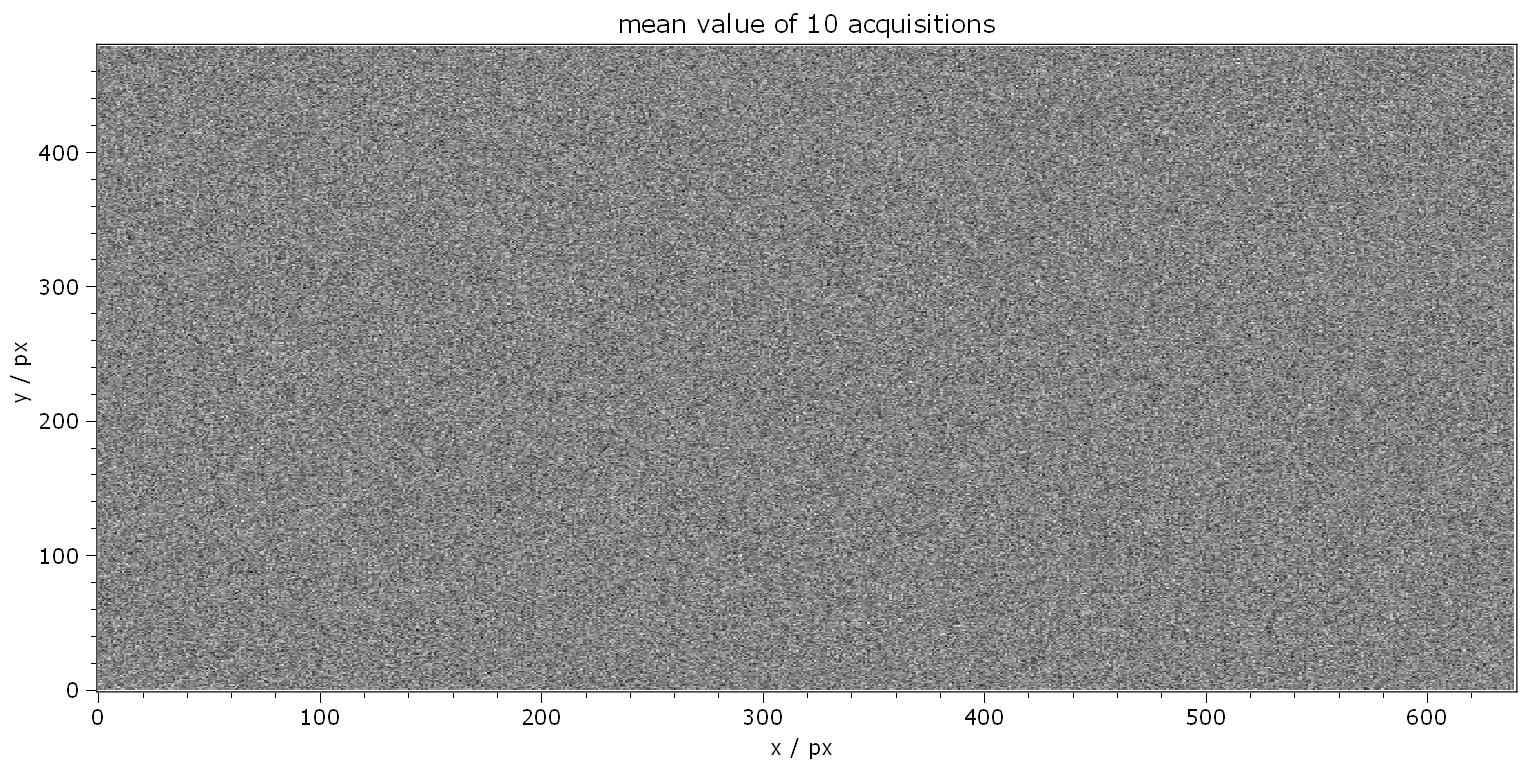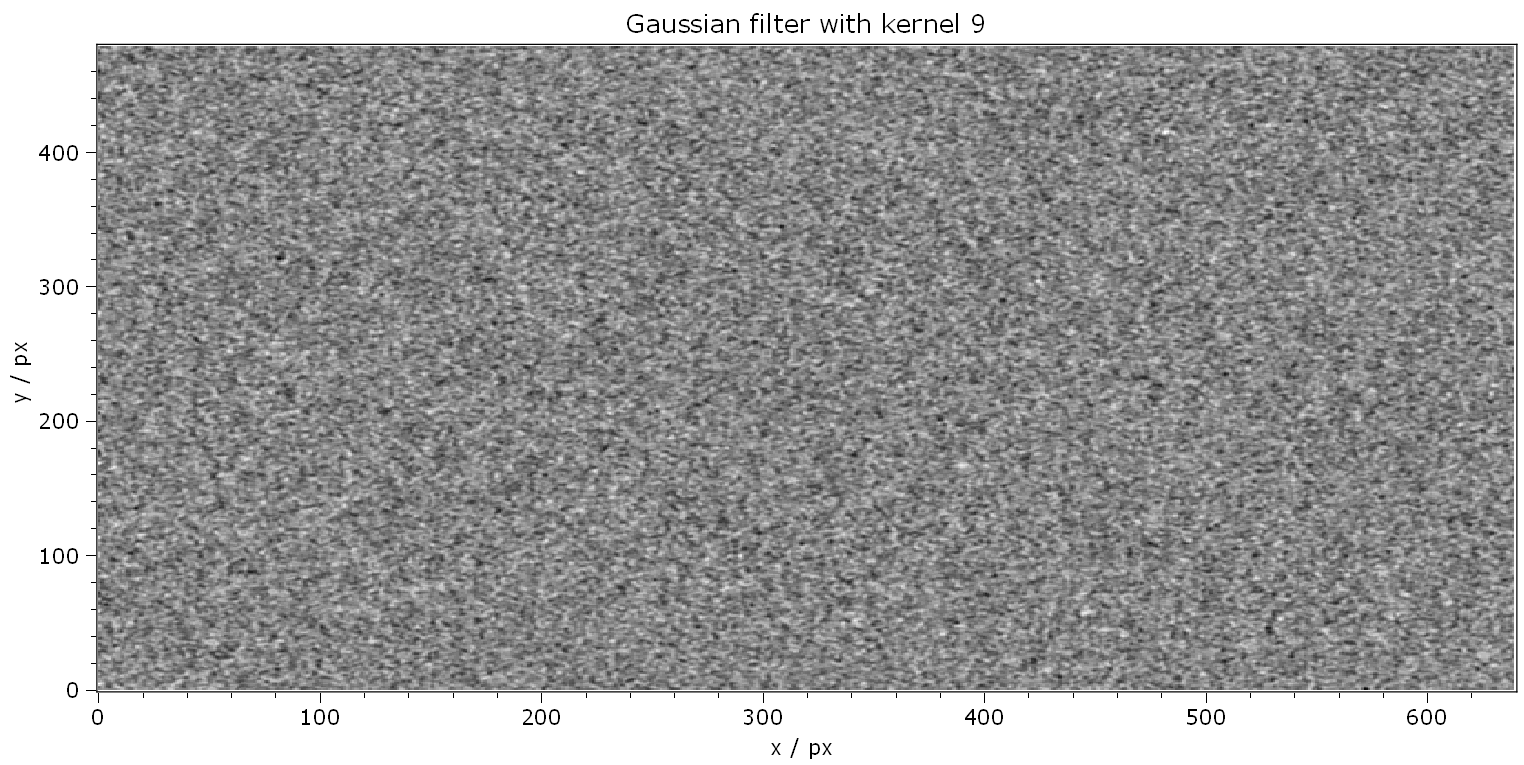Note
Click here to download the full example code
12.1.10.1.3. Cameras and images¶
This demo shows with the example of the DummyGrabber
how you acquire an image and apply some filters.
from itom import dataIO
from itom import dataObject
from itom import algorithms
from itom import liveImage
from itom import saveIDC
from itom import loadIDC
from itom import plot
Initialize a DummyGrabber camera
cam = dataIO("DummyGrabber")
cam.setParam("bpp", 8)
# start camera (only once)
cam.startDevice()
# show live image of camera
liveImage(cam)
(103, PlotItem(UiItem(class: Itom2dQwtPlot, name: plot0x0)))
Hint
The live images tries to acquire and get up to 50 images per second from the camera. If you want to acquire images by yourself in a script, you need to stop the timer of the live images for a certain amount of time. After you are done with your manual acquisition, you can restart the timer again.
currentStatus = cam.getAutoGrabbing()
print("Current value of auto grabbing property of the camera:", currentStatus)
cam.setAutoGrabbing(False)
Current value of auto grabbing property of the camera: True
Acquire 10 images in a list of dataObjects
result = []
d = dataObject() # empty data object where the image should be put in
for i in range(0, 10):
cam.acquire()
cam.getVal(d) # d is a shallow copy of the camera image
result.append(d.copy())
Save the list of images to the image1.idc file (idc is a file format for the python pickle module)
saveIDC("image1.idc", {"result": result, "description": "sample 1"})
Load the list of images
loaded_objects = loadIDC("image1.idc")
result2 = loaded_objects["result"]
# plot the 3rd image from the list
plot(result2[2])
(104, PlotItem(UiItem(class: Itom2dQwtPlot, name: plot0x0)))
Acquire 10 images in an image stack
num = 10
sizex = cam.getParam("sizex")
sizey = cam.getParam("sizey")
bpp = cam.getParam("bpp")
if bpp == 8:
d = dataObject([num, sizey, sizex], "uint8")
else:
d = dataObject([num, sizey, sizex], "uint16")
for idx in range(num):
cam.acquire()
cam.copyVal(d[idx, :, :]) # partial deep copy into one part of the 3d object d
plot(d)
(105, PlotItem(UiItem(class: Itom2dQwtPlot, name: plot0x0)))
Calculate mean value of image stack in z-direction.
result_mean = dataObject()
algorithms.calcMeanZ(d, result_mean, ignoreInf=0, calcStd=0)
# result_mean is a 3d Object with [1 x sizey x sizex] dimensions.
# We squeeze it to get a 2D Object
result_mean = result_mean.squeeze()
result_mean.setTag("title", "mean value of {} acquisitions".format(num))
result_mean.axisUnits = ("px", "px")
result_mean.axisDescriptions = ("y", "x")
plot(result_mean)
(106, PlotItem(UiItem(class: Itom2dQwtPlot, name: plot0x0)))

Apply Gaussian filter onto the mean image.
result_filter = dataObject()
kernelVal = 9
algorithms.gaussianFilter(result_mean, result_filter, kernelx=kernelVal, kernely=kernelVal)
Copy meta information from source dataObject.
result_filter.copyMetaInfo(result_mean)
result_filter.setTag("title", "Gaussian filter with kernel {}".format(kernelVal))
plot(result_filter)
(107, PlotItem(UiItem(class: Itom2dQwtPlot, name: plot0x0)))

# reset the auto grabbing functionality of possibly connected live images
cam.setAutoGrabbing(currentStatus)
# end camera
cam.stopDevice()
Total running time of the script: ( 0 minutes 0.771 seconds)